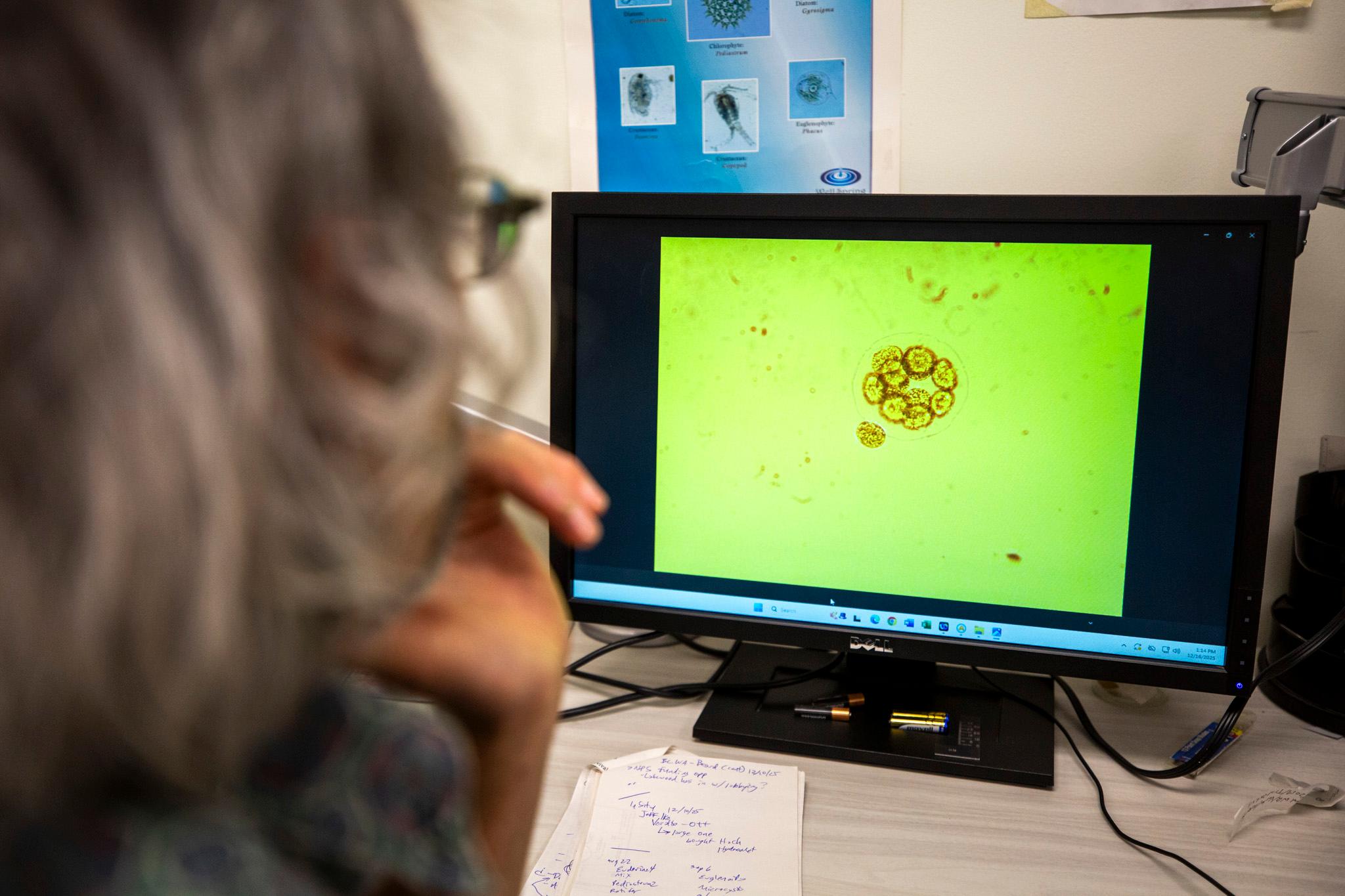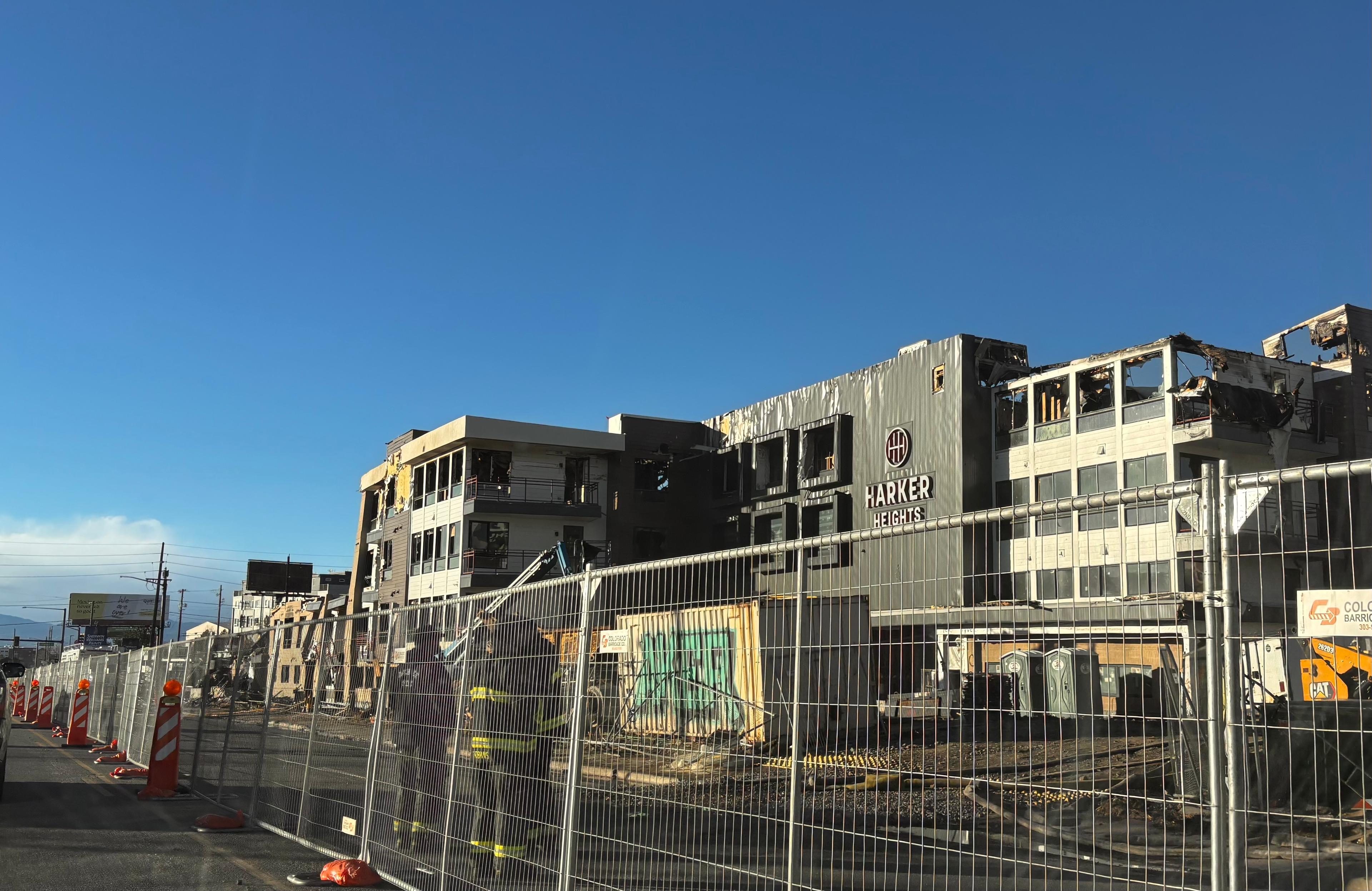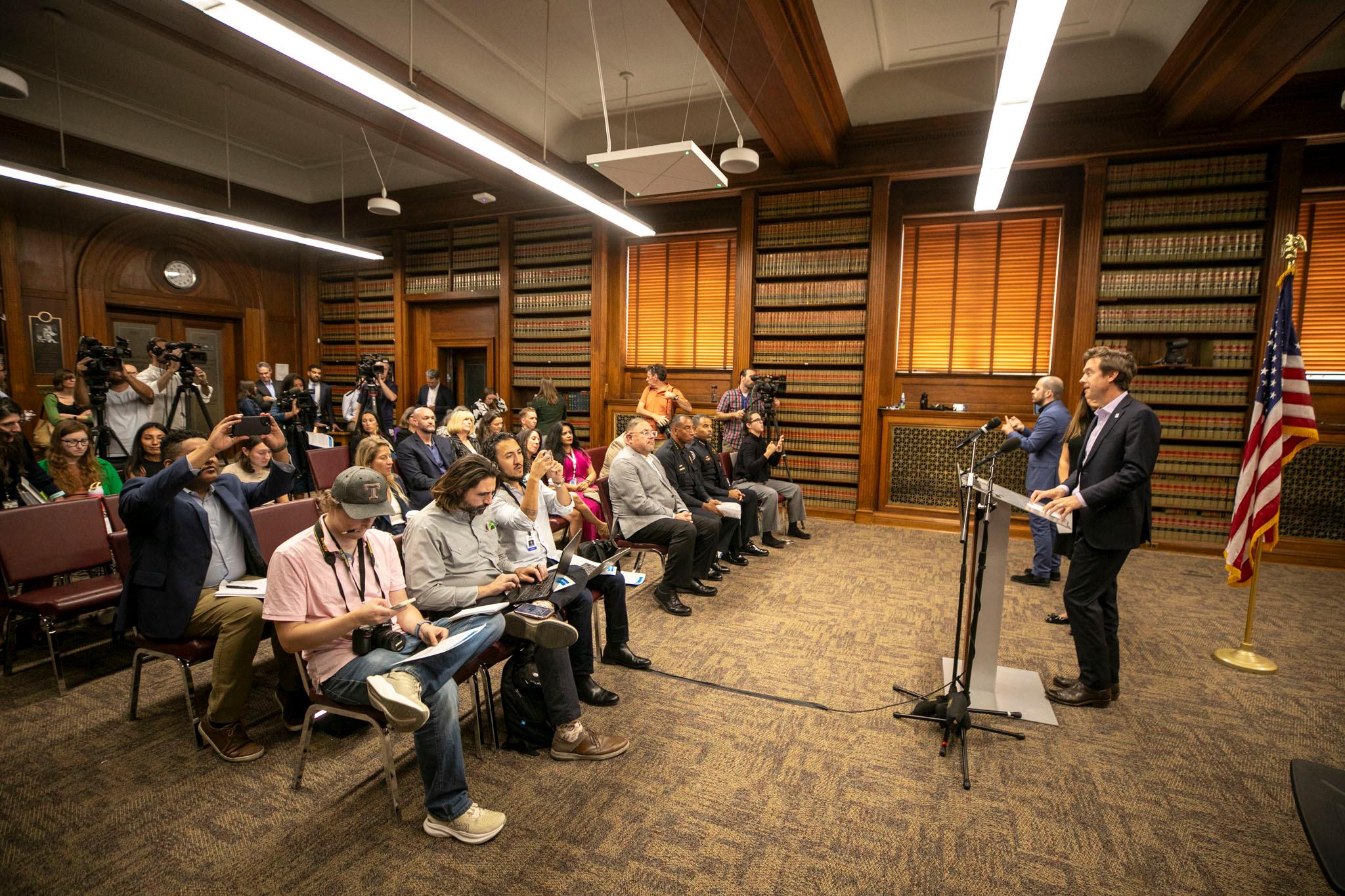Updated at 10:57 p.m. on Monday, Aug. 4, 2025
Denver voters will decide in November whether to approve $950 million in debt for the Vibrant Denver bond package, which would fund infrastructure maintenance and new projects across the city for years to come.
City Council President Amanda Sandoval described it as the largest bond proposal in Denver’s history.
The Denver City Council gave its final approvals to the proposals on Monday night, placing five separate questions for voters on the fall election ballot. The council made one last change to the proposals, taking money from three separate projects in the package to increase funding for affordable housing.
The package would fund roughly 60 projects, including new parks and recreation centers, repairs and revamps for road bridges, a training center for public safety employees, and updates for the backstage of Red Rocks.
City Council made last-minute changes to the bond package before sending it on to the voters.
The council made another set of changes to the spending plan on Monday.
City council members reduced funding for improvements at Red Rocks, street paving and the electrification of city facilities. That allowed them to raise the amount dedicated to affordable housing and accessibility improvements at shelters from $46 million to $59 million.
The other projects, council members argued, could be funded by other city sources.
Council also added language to the affordable housing package explaining that the money would fund projects that provide affordable housing and mitigate residential displacement.
“The housing crisis continues unabated,” said Councilmember Sarah Parady, and she would have preferred even more money to be dedicated to addressing that crisis.
Councilmember Amanda Sawyer objected to increasing the amount dedicated to affordable housing, arguing the affordable housing language was “extremely nebulous and ill-defined.” She suggested that perhaps the entire affordable housing funding should be cut for those reasons.
“I don’t think it’s appropriate for city council members to use bond dollars for an undefined project,” she said. “The projects that are associated with bond dollars should be clear to the voters.”
Ultimately, she supported the amended version of the affordable housing in the final vote. City officials pointed out that the housing proposal included some specifics, namely $10 million for affordable housing co-located with a city library in East Denver
Councilmember Chris Hinds, who represents a swath of the city center, said the bond did little to fund projects in his district, with all of the bond funding focused on large cultural institutions. The Downtown Development Authority will separately be spending $570 million in tax-increment financing on projects in the area, but Hinds said most of his district is outside the area that will benefit from that other package.
The bond did not include money for safety infrastructure on 13th and 14th avenues in his district, which mobility advocates had asked for. Hinds said the mayor’s office opposed such work until the Colfax Bus Rapid Transit project is complete.
Still, council members praised city staff and emphasized the importance of compromise.
“I think this bond is as good an example as I've ever seen not to let the perfect be the enemy of the good,” Councilmember Paul Kashmann said.
The city, he said, simply does not tax itself enough to avoid taking on debt to pay for infrastructure.
“We have $7 billion in capital needs and less than a billion dollars in this bond package,” said Sawyer, arguing the bond “is as good as it possibly can be.”
Councilmember Stacie Gilmore talked about how the bond is going to create jobs and energize Denver’s economy, saying it is a great mix of “maintenance and new catalytic projects.”
“This is a tremendous opportunity for us to do so much for the city and for your neighborhoods in a very, very short period of time,” Gilmore said. “Otherwise, we would never have this opportunity as a city, because we do not have the funds in our annual general fund that is funded predominantly by sales tax revenue.”
“Nobody gets everything they want, but everybody gets something they need,” Councilmember Kevin Flynn said.
Councilmember Serena Gonzales-Gutierrez said the process for planning the bond had been rushed. She also questioned whether community members’ priorities were included, since some lack the resources and connections with city officials to get their requests noticed.
“I asked many times what the process was to assess equity throughout this process,” though she said she never got a solid answer and doubts there was a process to assess equity at all.
“I am disappointed that we were led to believe that this was a co-led with community,” she said. “But I am hopeful for this bond that I do see many positive projects that are aimed at investing in historically uninvested communities.”
Councilmemer Flor Alvidrez voted against advancing the bond questions about funding facilities and transportation projects.
“It feels like a bait and switch, and we’re getting breadcrumbed,” she said.
She said it was a rushed process and argued the bond shortchanges BIPOC communities.
“I fear we're skipping on critical conversations about long-term fiscal health and placing the burden of Denver's growth on taxpayers instead of developers who benefit most,” Alvidrez said.
She expressed a lack of trust in the mayor’s office and argued her residents feel left out of the bond. Ultimately, she still supported several of the proposals.
Voters will see five separate proposals on the ballot:
- Transportation and mobility, including rebuilds of major road bridges, for $441,420,000
- City facilities, such as libraries, cultural centers and a training center for emergency responders, for $244,430,000
- Parks and recreation, including new parks and facility upgrades, for $174,750,000
- Housing and shelter, including subsidy programs, facility upgrades and funding for affordable housing, for $59,300,000
- Health and human services, including new and expanded facilities, for $30,100,000
Each of the proposals received a strong majority of council support, with Hinds and Parady opposing the parks and recreation proposals, Alvidrez and Hinds opposing the transportation proposal, and Alvidrez opposing the city infrastructure proposal.
The biggest items in the package include:
- $70 million for Park Hill Park
- $89 million toward the reworking and partial teardown of the 8th Avenue viaduct and $50 million to the 6th Avenue viaduct.
- $75 million for a new training center for the police, sheriff and fire departments
- $75 million for the Marion Underpass and related connections in Globeville-Elyria Swansea.
- $55 million for the West 38th Avenue multimodal transportation project.
What would it cost?
The bond would not result in higher property taxes. Instead, the city would use existing property tax revenues to pay off the new debt over decades. The city can afford the debt service because it is winding down its debt payments on previous bond packages.
The proposal includes $950 million for the projects, but the city would pay another $1 billion in interest on the debt.
Denver voters have almost always been willing to approve new debt packages. But with the city facing a $250 million budget shortfall — in part a product of excessive spending — and bracing itself for cuts, the bond’s supporters may face a tougher political campaign.
Mayor Mike Johnston has argued the bond package could act as a stimulus, helping to keep the city’s economy growing. The city cannot legally use the money in question to help with its budget deficit.
If voters reject the bond, the city would instead use the money to pay down its current debt faster. Elected officials could later return to voters and ask them to approve a different bond package.
City officials say Denver’s general fund is not big enough to build and maintain bridges, roads, parks, libraries and other institutions. They argue debt is a necessity.
Editor's note: This story originally stated that the electrification of a specific building, the Arie P. Taylor Senior Center, had been cut. Funding for the electrification of municipal buildings was cut from the bond, but no building has been identified. The bond still has funding for the Arie P. Taylor Senior Center.











